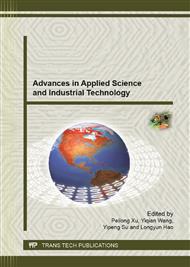p.476
p.480
p.484
p.489
p.493
p.497
p.501
p.506
p.510
InSAR Adaptive Extended Kalman Filter Phase Unwrapping Algorithm
Abstract:
Phase Unwrapping (PU) is the key step in the image processing for Interferometric Synthetic Aperture Radar (InSAR). In the Extended Kalman Filter (EKF) model of PU, due to the state space model is not taken into account the terrain factors, it is often resulted in unwrapping error delivery as the pixel to the next when the state changes rapidly in steep terrain. The observation equation is nonlinear and usually applied in PU through linear processing, requiring the system model and noise statistics known. But in fact the mathematical model or statistical noise is completely or partially unknown; the results have been inevitably lead to the declining of valuation accuracy and filter divergence. If directly applied in phase unwrapping, it is made impossible to retrieve surface deformation. In order to solve this problem and fully consider the terrain effect and model error, an adaptive EKF PU algorithm (AEKFPU) for InSAR is presented. On the one hand, it is achieved local adaptive estimation of image fringe frequency through 2D FFT and Chirp-Z Transform (CZT) joint method, by considering the impact of terrain factors on unwrapping results; On the one hand, the fading factor is calculated by innovation covariance and adaptively adjusted with the error covariance so as to suppress the memory length of the filter, compensating the effect of incomplete information on unwrapping. The experimental results are proved the proposed method is effective, it can be dealt with phase unwrapping and filtering simultaneously, and can be adaptively considered terrain factors in state space model and compensated for model error in observation equation model, ultimately improving the accuracy of phase unwrapping.
Info:
Periodical:
Pages:
493-496
Citation:
Online since:
September 2013
Authors:
Price:
Сopyright:
© 2013 Trans Tech Publications Ltd. All Rights Reserved
Share:
Citation:


